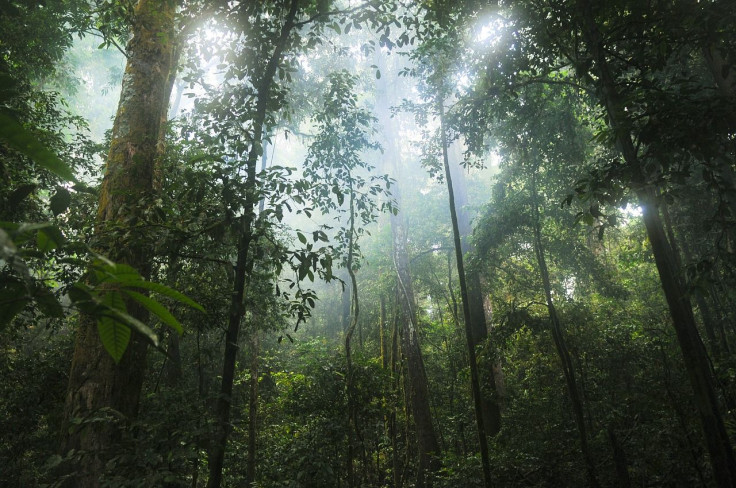LOOK: 2 'Rainbow-hued' Crabs Considered 'Lost To Science' Rediscovered
KEY POINTS
- Scientists rediscovered two crabs that have gone unseen for years
- Both rediscovered species are land-dwelling crabs and both have colorful hues
- The habitats of both species are under threat due to forest destruction
A recent expedition turned out to be a big one for a group of researchers as it led to the rediscovery of two rainbow-hued crabs that had been "lost to science" for many years.
The search for the land-dwelling Sierra Leone crab, which has not been sighted since 1955, took lecturer and researcher Pierre A. Mvogo Ndongo, of the University of Douala, to Sierra Leone for a 23-day expedition earlier this year, Re:wild said in a news release.
African land crabs are "unique" and only five such species are known to exist. They live in burrows on the floor of rainforests far from water sources and may even climb trees. And unlike water-dwelling crabs, land crabs are often more colorful, Mongabay reported.
As part of the expedition, Ndongo searched the northern, southern and southeastern provinces of Sierra Leone. The team also interviewed locals to ask for any possible sightings of land-dwelling crabs.
After many false leads, they found an Afzelius's crab, which had a purple body and orange legs, in Moyamba District forest. The species hasn't been sighted for 225 years and has been considered "lost to science." It was last sighted in 1796.
The research team also found several others at the same site over the next few days, suggesting a possibly healthy population "at least in that location."
An expedition in search of lost freshwater crabs found 2 different #LostSpecies! The Sierra Leone Crab lost since 1955, and Afzelius’s Crab lost since 1️796! https://t.co/AilrVwxb96 pic.twitter.com/3ytfREZUY0
— Re:wild (@rewild) August 1, 2021
The team later found six specimens of the Sierra Leone crab at Sugar Loaf Mountain in Western Area National Park. Just like Afzelius's crabs, female Sierra Leone crabs have purplish bodies and orange claws, but the males have "pinkish-purple claws" and orange legs.
"When I found the Sierra Leone crab, I was very very happy. This was after almost three weeks of searching for lost species," Ndongo said in the news release. "This trip was very very difficult. You have to be psychologically strong. But I was very determined."
🦀🌈 FOUND: The Sierra Leone crab, one of our 25 most wanted #LostSpecies, has been rediscovered! The rainbow-hued crab, with purple claws and orange-colored legs, hadn’t had a confirmed sighting since 1955. https://t.co/AilrVwxb96
— Re:wild (@rewild) July 30, 2021
📷 : Pierre A. Mvogo Ndongo pic.twitter.com/Lrvqsf81YF
The team also discovered two previously unknown crab species under the genus Liberonautes. Previously, only one species under the genus was known to exist in Sierra Leone, Mongabay noted.
"It's amazing that this expedition found two lost species and two species new to science," said Barney Long, senior director of conservation strategies at Re:wild. "The Sierra Leone crab is the eighth of our 25 most wanted species to be rediscovered, and it was a difficult search for the team, but their persistence was key to its success like all lost species searches."
According to Re:wild, the habitats of both the rediscovered species are already threatened with forest destruction for agriculture and firewood collection. In the Moyamba District forest where the Afzelius's crab was rediscovered, for instance, the land was "largely intact" but it was facing agricultural encroachment.
"Now we have to gather more information about the species' ecology, population size, and behavior," Neil Cumberlidge of Northern Michigan University, who worked with Ndongo on the expedition, said. "We plan to follow this expedition up with on-the-ground conservation of these threatened species."
Also this year, the organization reported the rediscovery of one of the "most elusive birds in South America" after almost 16 years, the "tiny Shrek" Urich's Tyrannulet.

© Copyright IBTimes 2024. All rights reserved.






















